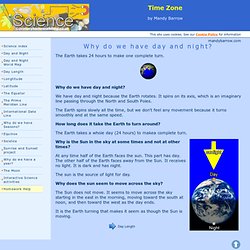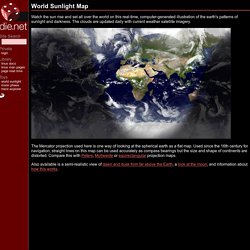

Time Zones & How They Work. Learning Zone Class Clips - Day and night on Earth - Science Video. Time Zones. Learning Zone Class Clips - The Sun - day and night (pt 2/3) - Science Video. World Time Clock & Map - Check Current Local Time Around the World. KS2 Science - Day and night. Day and Night time and the Seasons. The Earth takes 24 hours to make one complete turn.

Why do we have day and night? We have day and night because the Earth rotates. It spins on its axis, which is an imaginary line passing through the North and South Poles. The Earth spins slowly all the time, but we don't feel any movement because it turns smoothly and at the same speed. World - Sunrise, sunset, dawn and dusk times - Gaisma. Sunrise Sunset Calendars - Worldwide Locations.
FearOfPhysics.com:Sun, Earth, and Moon in Motion. Learning Zone Class Clips - Sun and shadows - Science Video. Sunrise and sunset and day length. Learn how sunrise, sunset and day length change through the year © 2012 This website is produced by the Student Recruitment, Admissions and International Development Division at The University of Manchester.

Day and Night. Learn how the movement of the Earth makes day and night -time © 2012 This website is produced by the Student Recruitment, Admissions and International Development Division at The University of Manchester.

World Sunlight Map. Watch the sun rise and set all over the world on this real-time, computer-generated illustration of the earth's patterns of sunlight and darkness.

The clouds are updated daily with current weather satellite imagery. The Mercator projection used here is one way of looking at the spherical earth as a flat map. Used since the 16th century for navigation, straight lines on this map can be used accurately as compass bearings but the size and shape of continents are distorted. Compare this with Peters, Mollweide or equirectangular projection maps.